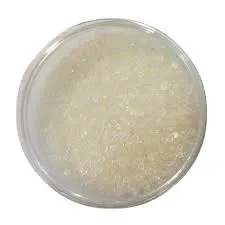Chemicals Used in Sewage Treatment Plants
Sewage treatment plants (STPs) play a crucial role in maintaining public health and environmental sustainability. With an increase in urbanization and population density, the necessity for effective sewage management systems has never been more critical. One of the key components in the operation of STPs is the use of various chemicals to facilitate the treatment of wastewater. These chemicals help in breaking down pollutants, disinfecting the treated water, and ensuring that the effluents released into the environment meet legal standards.
Types of Chemicals Used
1. Coagulants Coagulation is one of the initial steps in the sewage treatment process. Coagulants are chemical agents that help in the aggregation of suspended particles, making it easier to remove sediments. Common coagulants include alum (aluminum sulfate), ferric chloride, and polyaluminum chloride. These chemicals neutralize the charges on particles, allowing them to stick together and settle at the bottom of settling tanks.
2. Flocculants After coagulation, flocculation follows, where the tiny clumps of particles formed during coagulation are further agglomerated into larger flocs. Flocculants like polyacrylamide are often used in this step. These chemicals enhance the efficiency of the sedimentation process, effectively increasing the removal rates of suspended solids.
3. Disinfectants Once the wastewater has undergone primary and secondary treatment processes, the final step typically involves disinfection to eliminate pathogenic organisms. Common disinfectants used in STPs include chlorine, ozone, and ultraviolet (UV) light. Chlorination is widely utilized due to its effectiveness, although concerns about the formation of harmful by-products have led some facilities to explore alternatives like UV light, which poses less risk to human health and the environment.
4. pH Adjusters The treatment process often requires adjustments to the pH of the wastewater to optimize the performance of other chemicals and biological processes. Chemicals such as sulfuric acid or sodium hydroxide are commonly used to lower or raise the pH, respectively. Maintaining an appropriate pH is essential for the bacterial processes that occur in the biological treatment phase.
sewage treatment plant chemicals used

5. Nutrient Additives In biological treatment systems, particularly in activated sludge processes, the balance of nutrients is crucial for the healthy growth of microorganisms responsible for breaking down organic matter. In cases where nitrogen and phosphorus are lacking, nutrients like ammonium sulfate or potassium phosphate may be added to stimulate microbial activity.
6. Odor Control Agents STPs often face challenges with odors emanating from the treatment process, which can be a nuisance to surrounding communities. Chemicals such as sodium hypochlorite or calcium nitrate can be used to mitigate these odors. Additionally, biofilters and activated carbon systems also play a role in controlling emissions.
Environmental Concerns
While these chemicals are essential in ensuring effective sewage treatment, their use raises environmental concerns that must be addressed. For instance, the release of chlorine and its by-products can be harmful to aquatic life. Ozone, while an effective disinfectant, is more expensive and requires careful handling due to its reactive nature. Moreover, the introduction of flocculants and coagulants must be carefully monitored to prevent excessive chemical residues in the effluent.
Conclusion
The use of chemicals in sewage treatment plants is indispensable for the purification of wastewater and the protection of public health. Understanding the specific functions and potential environmental impacts of these chemicals is crucial for the optimization of treatment strategies. As technology advances, there is a growing emphasis on minimizing chemical use and enhancing treatment efficiency through sustainable practices. Innovative solutions such as biotechnological advancements in microbial treatments offer promise for a future where the environmental impact of sewage treatment is significantly reduced while still promoting effective wastewater management. Continuous research and development in this field will be essential in addressing the pressing environmental challenges of our time, ensuring that sewage treatment is both effective and sustainable for future generations.

